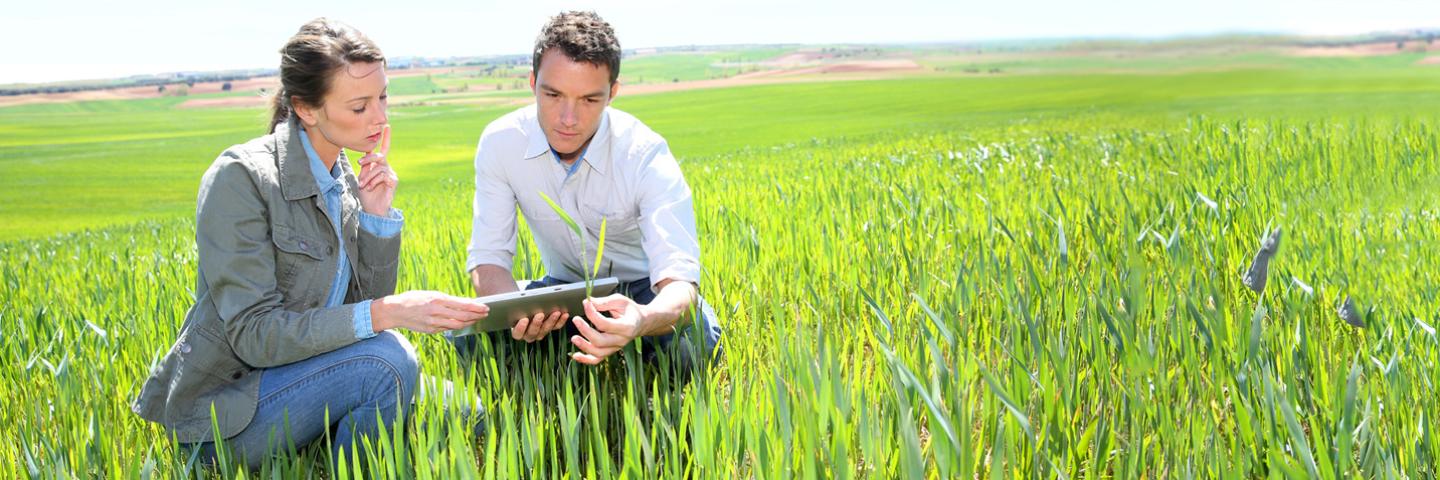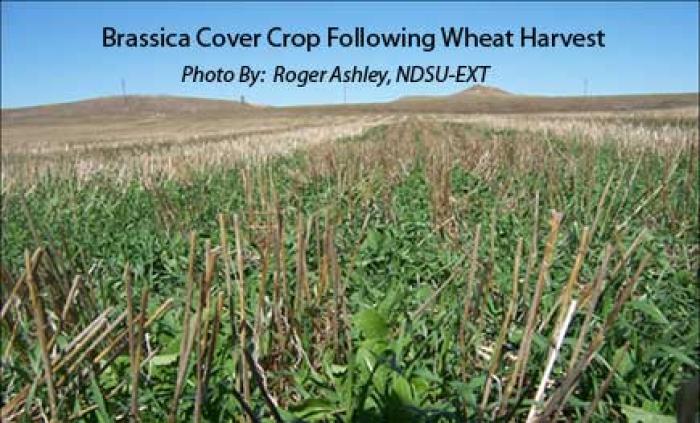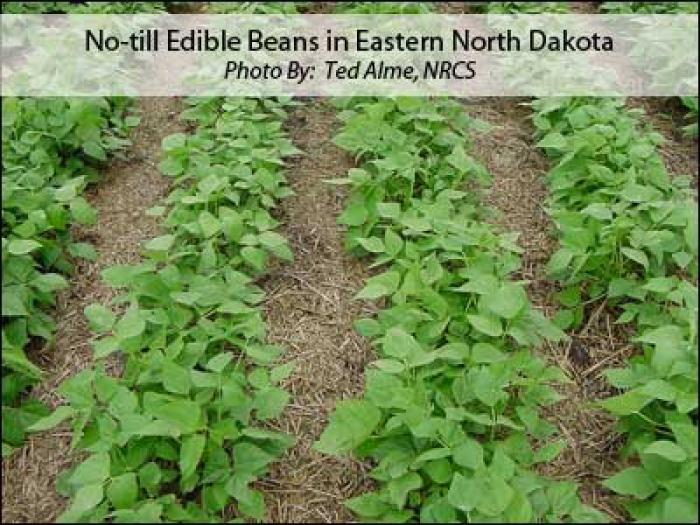
North Dakota NRCS staff provides agronomic assistance to producers in improving crop and hayland resources across the state.
Below are various agronomic links and references to assist visitors with questions on practices and cropping systems.
This site will be updated regularly to include additional resource concerns and management practices.

Cover Crop Information
USDA-ARS Northern Great Plains Research Lab, Mandan Cover Crop Table
SARE Cover Crop Web Site
Residue Management Information
What is residue management?
Residue Management is managing the amount, orientation and distribution of crop and other plant residue on the soil surface throughout the year. It includes all soil disturbing activities like tillage, nutrient applications and harvesting of residue. Residue management systems can be designed to accomplish multiple purposes including:
- Reduced water and wind erosion
- Maintain or increase soil organic matter
- Increase moisture available for plant use
- Cost savings from reduced fuel usage.
- Reduce soil particulate emissions and CO2 losses
- Provide food and escape cover for wildlife

There are three types of residue management systems:
- Mulch till - Full width tillage which disturbs the entire soil surface prior to planting (spring or fall). Tillage tools such as chisels, field cultivators, disks, sweeps or blades are used. Weeds are controlled with herbicides and/or cultivation.
- No till - Soil and residue is left undisturbed from harvest to planting except for nutrient injection. Planting, drilling or nutrient application is done in a narrow seedbed or slot created by coulters, row cleaners, or disk openers. No full-width tillage operations are done. Weeds are controlled with herbicide and good crop rotation; cultivation may be used for emergency weed control. This practice is also referred to as zero-till; slot till, direct seeding or slot plant.
- Strip-till - Soil and residue is left undisturbed from harvest to planning except for strips up to a third of the row width. No full width tillage operations are done. These strips are cleared of residue and maybe tilled for warming and drying and fertilizer application purposes either before or during the planting operation. This practice is also referred to as row-till, zone-till or fall strip-till.
Additional Resource:
South Dakota No-Till Association
Crop Rotation and Diversity
Dakota Lakes Research Farm (Dr. Dwayne Beck)
USDA-ARS Northern Great Plains Research Lab, Mandan Crop Sequence Calculator
Soil Erosion Prediction
RUSLE2
What is RUSLE2?
Released in 2003, the Revised Universal Soil Loss Equation 2 (RUSLE2) estimates soil loss from rill and inter-rill erosion caused by rainfall on cropland. RUSLE2, like its predecessors, RUSLE and USLE, is used to predict the long-term average rate of rill and inter-rill erosion for several alternative combinations of crop system and management practice. It also considers specified soil types, rainfall patterns, and topography. When these predicted losses are compared with soil loss tolerances, RUSLE2 provides specific guidelines for effective erosion control.
Water Erosion
What is rill and inter-rill erosion?
Rill and inter-rill erosion is the removal of layers from the land surface by the action of rainfall and runoff. Erosion begins with the impact of raindrops, detaching soil particles and moving them across the surface. This process causes inter-rill erosion (sometimes called sheet erosion). Runoff from inter-rill erosion will collect and form rills across the hill slope. Sediment from rill and inter-rill erosion is transported down slope to where it slows enough to be deposited on the land surface or deposited directly into concentrated flow channels.
Revised Universal Soil Loss Equation, Version 2 (RUSLE2)
Soil Tillage Intensity Rating (STIR)
Soil Tillage Intensity Rating is a numerical value calculated using RUSLE2. It is based on factors determined by crop management decisions being implemented for a particular field. Lower numbers indicate less overall disturbance to the soil layer. Values may range from 0 to 200 with a low score preferred. STIR Value reflects the kind of soil disturbance as well as the severity of the disturbance caused by tillage operations. Specific components of the STIR value include:
- Operational speed of tillage equipment
- Tillage type
- Depth of tillage operation
- Percent of the soil surface area disturbed
Certified Crop Adviser (CCA) program
The Certified Crop Adviser (CCA) program is a membership service of the American Society of Agronomy (ASA). Any public, commercial or independent adviser, who counsels farmers, ranchers or other agricultural entities and can meet the rigorous standards of the CCA program is encouraged to participate. For more information check out the links below.
Certified Crop Advisor
North Dakota Certified Crop Advisors Program
Organic Farming Resources
The popularity of farmers' markets in North Dakota has grown along with increases in organic production and consumer interest in locally and organically produced foods.
Foundation for Agricultural and Rural Resources Management and Sustainability (FARRMS)
Northern Plains Sustainable Agriculture Society
North Dakota Department of Agriculture Organic Farming website
USDA- Agricultural Marketing Service National Organic Program Website
Contact:
Richard Webb
State Resource Conservationist
(701) 530-2084
C: 701-269-3146
richard.webb@usda.gov

